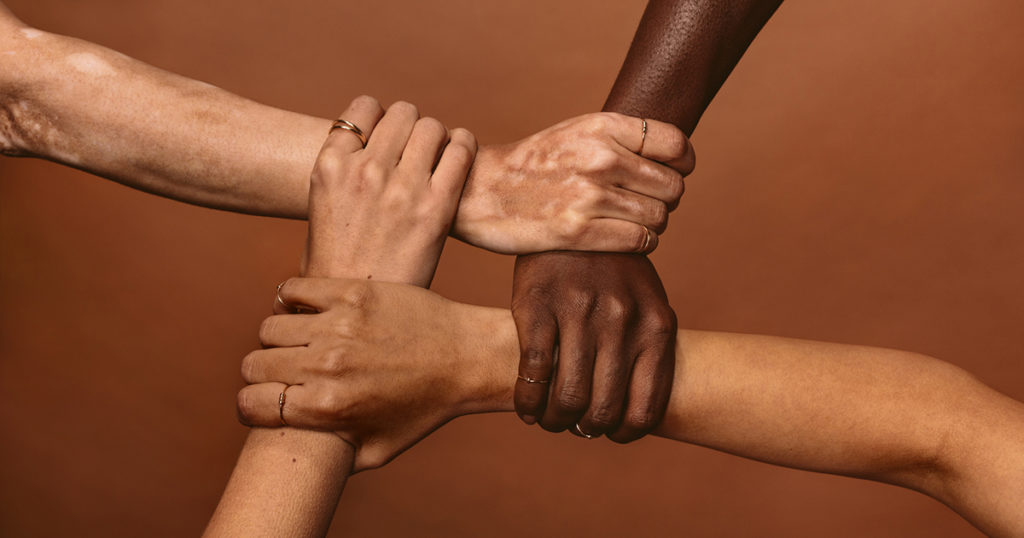By Monica Johnson, PsyD & Michelle Melton, PsyD
Multiculturalism. Diversity. Inclusion.
These are all buzzwords that have become more and more present in our national discourse in recent years. Within the mental health field, however, these discussions have been written about and researched for decades. In fact, there have been multiple taskforces, divisions, and guidelines developed to integrate multicultural competence in the provision of mental health services and research. Yet, there appears to be lingering challenges in translating the call for multicultural competence from literature to practice. Illuminating the greatest challenges to being or becoming a culturally competent therapist allows for strategic planning to ameliorate such barriers in ethical and effective care.
1. Adopting a colorblind perspective to treat everyone equally.
There is something so appealing about having a colorblind perspective; to believe oneself as not being influenced by racial prejudice or the “-isms” that oppress and marginalize people. However, the truth is we are, often in subtle and implicit ways.
When we enter mental health practice, either in practicum training or independent practice, we are far from being table rasas. We are indeed shaped by sociohistorical structures of society and have learned to operate and navigate ourselves accordingly. To believe that we can automatically adopt a neutral stance after years of such socialization does a disservice to our clients and to ourselves.
One of the most effective ways to prevent drift into colorblindness is to suspend any belief that we are neutral just because we have expertise in psychological science, counseling theory, and evidence-based treatment protocols.
An essential component of being multiculturally competent is to have awareness of ourselves as cultural beings; an awareness that acknowledges our privileges, biases, and status.
Pamela Hays’ ADDRESSING model is a useful tool to recognize and understand the sociocultural influences on one’s identity that could be leveraged in therapeutic practice. Having greater awareness of oneself as a cultural being (and a more useful framework to consider client’s cultural identities) allows the therapist to increase and maintain cultural competence in practice.
2. Being expected to consider diversity in all therapeutic aspects, but not knowing how to best integrate it.
To be an ethical and competent therapist means being able to know and understand all aspects of diversity. This expectation is daunting! How can one truly know and consider all aspects of human diversity and demonstrate expertise in them?
Given the number of competency areas mental health practitioners must demonstrate (i.e., evaluation and assessment, care planning and coordination, ethical and legal standards, consultation and supervision, intervention, professionalism, etc.), it is natural to prioritize areas in terms of significance and importance in everyday practice. In other words, we can easily drift away from integrating cultural conceptualizations in our work.
Challenging unhelpful habits regarding cultural considerations, having access to, and training in making cultural adaptations in therapeutic practices increases best practices and quality services. Such adaptations can include:
- models to modify evidence-based protocol
- working with interpreters
- culturally-responsive interview questions and more.
3. Navigating boundaries between client values and those of the therapist.
“I’m being discriminated against! It’s reverse racism. They get to be on welfare and ride around in Cadillacs. But, I can’t get any help because I’m White. I don’t even see myself on TV anymore,” exclaimed a white, septuagenarian, male client. This conversation took place within the first 15 min of an intake session.
Being a Black, female, psychologist, with years of study (and personal experience) on racism, prejudice, and bigotry, I was taken aback on how to respond in this moment.
On a personal level, I didn’t agree with this client’s perspective and took offense. On an academic level, I had facts to refute his claims. On a therapeutic level, I knew this client was sharing something painful and heard evidence of some unhelpful thinking habits. My personal, academic, and therapeutic reactions were warring for prominence in my response. Being able to effectively attend to the client’s values, therapist’s values, and therapeutic need is delicate and best achieved and sustained through multicultural competence. This means adopting a framework that incorporates cultural humility and provides guidance in knowing what to do, when to do it, and how much.
See also: Psychological Flexibility: A Tool for Working With Difference
The culturally competent therapist is held to a high standard to improve the conditions of diverse individuals, groups, and communities. To meet this standard, awareness of the challenges makes way for engagement in efficient skill building. Skill building, in turn, translates into new awareness and knowledge to strengthen therapists’ effectiveness in addressing the mental health and well-being for all peoples.
Join Us. Learn How to More Effectively Work With Issues of Race and Racism in Therapy.
